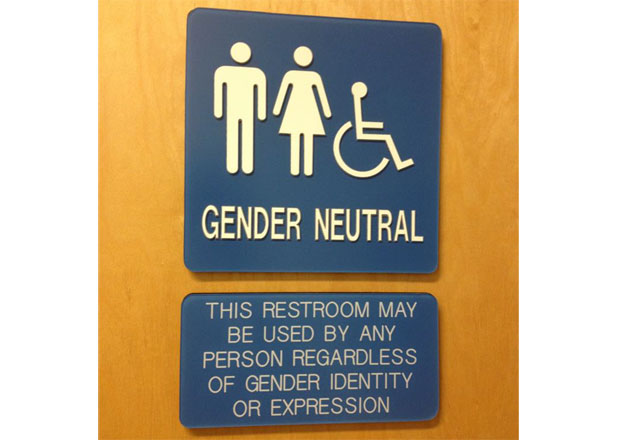Making Bathrooms more ‘Accommodating’ by Emily Bazelon

If you sat down and thought about the number of visual markers within society that draw our attention to sex difference you would be amazed. Signs that say MEN and WOMEN on bathroom doors are prominent examples of those visual markers. Bathrooms are supposed to be spaces of vulnerability and free for all to utilize in public places, but they require certain terms to enter. Something as simple as going to the bathroom may not be as simple for a person that identifies as transgender or disagrees with their assigned gender they were given at birth. In Emily Bazelon’s article Making Bathrooms More ‘Accommodating’, the author addresses the issue associated with men and woman designated bathrooms and proposes that society should create non-discriminatory bathroom or locker room spaces for everyone to use.
In Bazelon’s first paragraph she introduces the arguments of people that oppose the idea of “accommodating” men, women, and transgender people. For example in Houston voters rejected an ordinance that was nicknamed the “bathroom ordinance” that would have been used to protect against discrimination in employment, housing, public spaces, etc… Through the use of T-shirts that read “No men in Women’s Bathrooms” and TV commercials that portrayed a man threatening a woman in a bathroom, voter’s fears were invoked and they rejected the plan. Bazelon also gives examples of the progression towards accommodation that has recently been seen within the school system. Several school districts across the country have agreed to use the preferred gender pronouns and names of transgender students, but when it comes to bathrooms and locker room spaces they have a different arrangement. In the example given in the article, an Illinois, transgender high school student was given permission to shower and change in the locker room with female peers, but privacy curtains were provided as a solution.
Bazelon continues her informative article by defining exactly what the term “accommodate” means. According to the author the term “accommodation” is frequently mentioned in discussions about access to bathrooms and originates from the Latin meaning “to make fitting”. Bazelon defines accommodate as “to bring into argument or harmony, to furnish with something desired or needed, to favor or oblige” (2015). Examples of Congress granting accommodation for religious people that adorned turbans or hijabs at work were given. Also the Disabilities Act were examples utilized within the article.
Bazelon spends the remainder of her article discussing the environment of men and women bathrooms as a whole. The environment of the women’s room is “more refined and genteel than that of a man’s room” (2015). There is also a camaraderie associated with the ladies room. A huge problem that ails the transgender community when pertaining to their use of public restrooms is the inability of the same sex to recognize them as equals. When men and women fail to accept transgender people as equals, they are looked at as the “others” and sometimes are denied access to the designated restrooms. Bazelon’s ultimate goal is to make individuals aware of this social injustice. She wants her readers to understand that transgender people are required to “accommodate” society every day and at the very least they can have restrooms that are inclusive.
Bazelon, Emily. “Making Bathrooms More ‘Accommodating’.” The New York Times. The New York Times, 21 Nov. 2015. Web. 15 Feb. 2016.